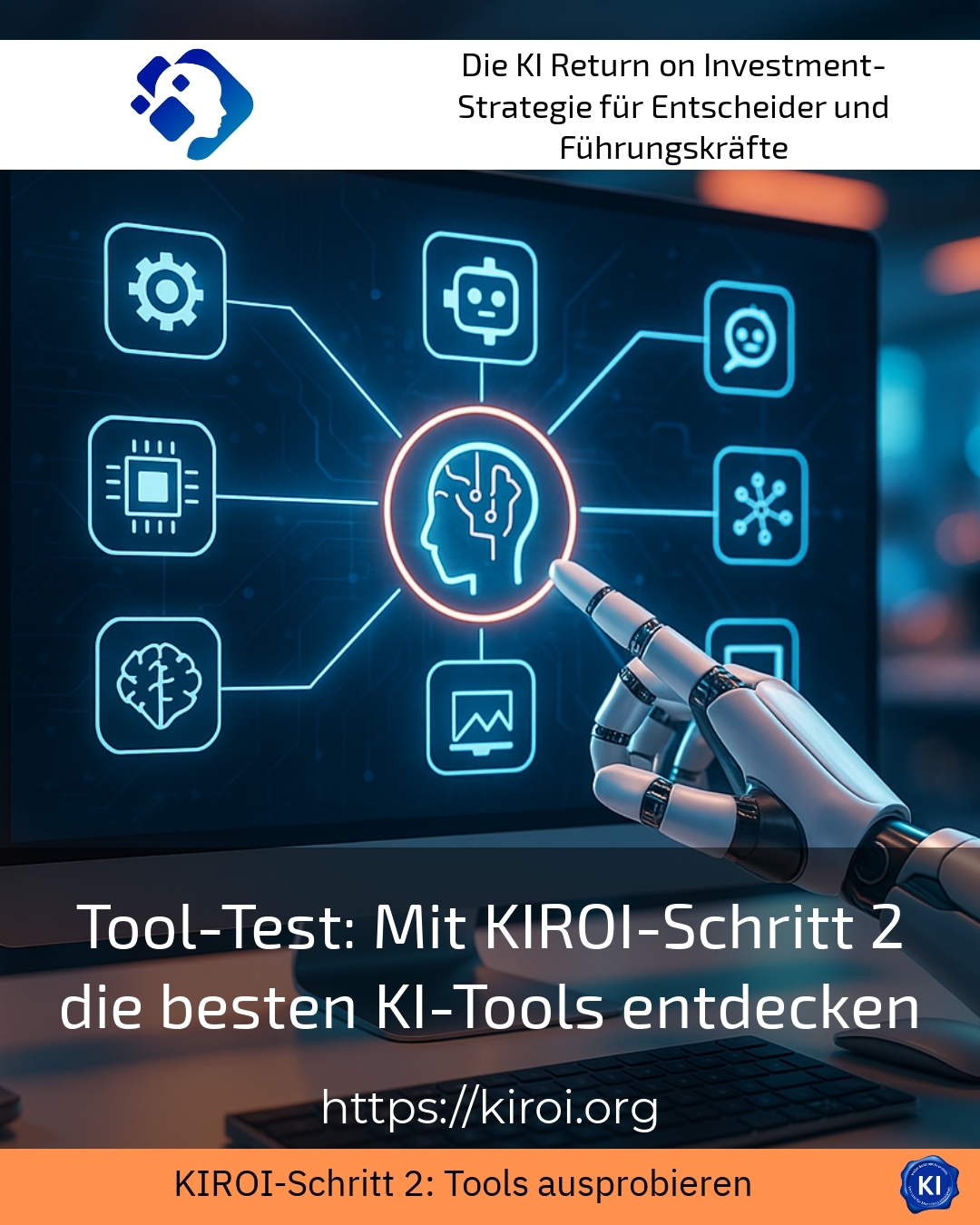Today, the tool test is an indispensable building block for companies that want to organise their processes more efficiently in the digital transformation. KIROI Step 2 in particular provides a structured and practical way of discovering and selecting the best AI tools. The tool test focuses not only on the technical evaluation, but above all on the suitability of the tools for individual company requirements. In this way, this process helps to realise sustainable success with artificial intelligence.
Tool test in KIROI step 2: The key to choosing the right software
As part of the KIROI process, the tool test is used to identify precisely those digital tools that will really drive operations forward. A clearly structured process begins with a precise analysis of the requirements and use cases. This involves not only testing technical functions, but also evaluating user-friendliness, compatibility and integration capability[1][6].
In industrial production, for example, companies use tool tests to evaluate early warning systems that detect faults in machines and thus minimise downtimes. For example, an automotive supplier was able to significantly improve maintenance planning and stabilise production through targeted tool testing.
In marketing, tool tests help to check SEO solutions that reveal gaps in the keyword strategy. As a result, a medium-sized service company achieved noticeable improvements in visibility and competitive position by managing its online activities in a more targeted and data-based manner.
The tool test also brings advantages in office organisation: Automation tools for data management or contract management are tested for their user-friendliness and ease of integration into existing systems. For example, a financial services provider measurably optimised its workflows and reduced sources of error.
Why user feedback is indispensable in tool testing
An important success factor in tool testing is the early involvement of all users. Practical experience shows that tools are only sustainable if they are intuitive to use and fit into everyday working life. This is why many companies continuously collect feedback, document the strengths and weaknesses of the tested solutions and thus create transparency in the selection process[8].
One example: In a technical services company, the tool test focussing on competitive analysis was crucial in identifying gaps in the digital strategy and noticeably improving online marketing measures.
Another practical case from the retail sector shows how a tool test of e-commerce platforms enabled targeted improvements in customer service, which had a positive impact on sales and customer satisfaction.
In the healthcare sector, a tool test for digital documentation systems ensured that administrative processes became more efficient and error rates fell - clearly easing the burden on staff.
How companies organise a successful tool test
The tool test in KIROI step 2 is not a one-off event, but an iterative, learning process. It is advisable to define clear objectives, criteria and use cases before the test phase. This ensures that the evaluation is targeted and that the selection is supported by reliable data.
The following steps are recommended for practical implementation:
- Detailed analysis of process requirements and employee involvement to capture realistic needs
- Systematic testing of tools using practical application scenarios
- Collecting and analysing user feedback on usability and integration
- Evaluation of costs, benefits and adaptability
- Continuous adaptation of the selection through updates and new requirements
This structured approach allows production companies, for example, to quickly find the best control software for their machines. At the same time, a marketing team can use targeted tool tests to analyse and improve the impact of its campaigns.
In office organisation, the process helps to discover automation solutions that make routine tasks more effective and reduce the workload of employees.
BEST PRACTICE with one customer (name hidden due to NDA contract) The tool test was used by a technical service provider to evaluate software for competitive analyses. Thanks to accompanied coaching, the objectives were precisely defined and test results were analysed in a structured manner. This led to a clear focus on the most relevant functions and a measurable increase in competitiveness.
My analysis
The tool test in KIROI step 2 is a decisive success factor in the selection of suitable AI tools. It provides a methodically structured framework that takes both technical and organisational aspects into account. Companies from different industries use the tool test to precisely map individual requirements and make reliable decisions. User integration and continuous customisation make the process a sustainable instrument. Overall, the tool test supports the targeted testing of digital innovations, the optimisation of business processes and the creation of long-term added value.
Further links from the text above:
Tool test in KIROI step 2: How decision-makers find the best
Tooltest: Successfully testing AI innovations with KIROI Step 2
Tool test in KIROI step 2: How decision-makers get started
Focus on tool testing: How to succeed in step 2 of the KIROI process
For more information and if you have any questions, please contact Contact us or read more blog posts on the topic Artificial intelligence here.















